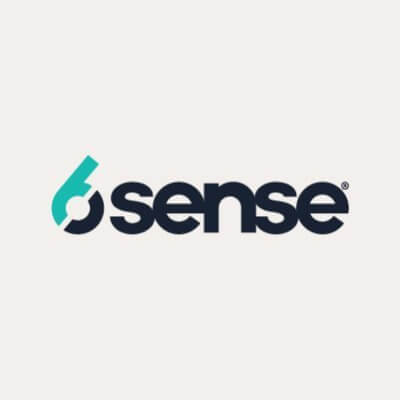Key Growth Drivers and Industry Insights Shaping the Future of the Water Soluble Films Market
Market Overview
The global water soluble films market was valued at USD 440.71 million in 2024 and is projected to reach USD 772.28 million by 2034, growing at a CAGR of 5.8% during the forecast period from 2025 to 2034. Water soluble films are biodegradable, eco-friendly materials that dissolve in water without leaving harmful residues. They are used across various sectors including agriculture, pharmaceuticals, detergents, and packaging.
Key Market Growth Drivers
Growing environmental awareness and strict regulatory frameworks are driving demand for water soluble films. Industries are adopting sustainable packaging solutions to reduce plastic waste, making water soluble films a popular alternative for conventional materials.
Increasing use in the detergent industry is boosting market growth. These films are used in unit-dose packaging for laundry and dishwashing detergents, offering safety, convenience, and precise dosage with minimal handling and waste.
Expansion in pharmaceutical applications is contributing to the market. Water soluble films are used for drug delivery systems and packaging of active ingredients. Their ability to dissolve in water ensures ease of consumption and safe disposal, improving user experience and compliance.
Rising demand in agrochemical packaging is further supporting growth. Water soluble films allow safe handling and precise application of fertilizers and pesticides, minimizing chemical exposure and reducing environmental contamination.
Key Companies in the Market
The major companies operating in the global water soluble films market include:
-
Mitsubishi Chemical Group Corporation
-
SEKISUI CHEMICAL CO. LTD.
-
KURARAY CO., LTD.
-
AICELLO CORPORATION
-
Ecopol S.p.A.
-
Arrow GreenTech Ltd.
-
Cortec Corporation
-
Changzhou
-
Greencradleland Macromolecule Materials Co., Ltd.
-
Jiangmen Proudly Water-soluble Plastic Co., Ltd.
-
AMC Ltd.
-
Noble Industries
These companies focus on innovation, biodegradable product development, and capacity expansion to meet rising global demand and environmental compliance standards.
Market Challenges
High production costs compared to conventional plastic materials remain a challenge. The complex manufacturing process and use of specialty polymers make water soluble films more expensive, impacting large-scale adoption in price-sensitive markets.
Moisture sensitivity of these films can limit storage and application conditions. Exposure to humidity may affect film integrity, requiring careful packaging and logistics to maintain product quality throughout the supply chain.
Limited awareness and adoption in emerging markets is slowing growth. While developed regions are embracing eco-friendly solutions, developing countries often lack infrastructure, awareness, or regulatory push to adopt sustainable alternatives.
Performance limitations in industrial settings can hinder expansion. Water soluble films may not provide the same strength or resistance as traditional plastics under extreme conditions, restricting their use in certain industrial or transport applications.
Supply chain constraints and limited raw material availability can impact production. Fluctuations in availability of polymers such as polyvinyl alcohol (PVA) may lead to delays or increased production costs, affecting market stability.
Regional Analysis
Asia-Pacific leads the global water soluble films market, driven by growing demand from the detergent and agrochemical industries. China, India, and Japan are key contributors, with increasing adoption of eco-friendly packaging and government policies promoting sustainable alternatives.
North America is a strong market, supported by environmental regulations and demand from the healthcare and consumer goods sectors. The United States is investing in sustainable materials, with innovations in pharmaceuticals and packaging using water soluble films.
Europe holds a significant share due to its strict sustainability goals and circular economy policies. Countries like Germany, France, and the UK are adopting biodegradable films in agriculture and pharmaceuticals, supporting market growth with regulatory backing.
Latin America is emerging as a growing market with increasing use of water soluble films in agriculture and hygiene products. Brazil and Mexico are key markets, driven by rising consumer awareness and expansion in agrochemical applications.
The Middle East and Africa region is showing gradual growth, supported by rising demand in food packaging and detergents. As governments promote green solutions and industries modernize, the market is expected to gain momentum in this region.
Conclusion
The water soluble films market is gaining traction globally as industries shift toward environmentally responsible materials. Increasing applications in detergents, agriculture, and pharmaceuticals are driving steady demand, supported by regulatory compliance and consumer awareness.
Leading companies are innovating to improve performance, biodegradability, and cost-effectiveness of these films. Market players are focusing on expanding production capacity and strengthening supply chains to serve global demand.
Challenges such as cost, moisture sensitivity, and limited awareness must be addressed through education, innovation, and collaboration across stakeholders. Technological advancements and regional policy support will be key to unlocking new opportunities.
With growing focus on sustainability and smart packaging solutions, the global water soluble films market is expected to continue evolving as a vital component of the green materials landscape.
Chronic Obstructive Pulmonary Disease Market
Congestive Heart Failure Market
Chronic Obstructive Pulmonary Disease Market
EMEA Point-Of-Care Diagnostics Market
US Medical Billing Outsourcing Market

















































































































































